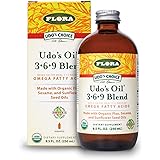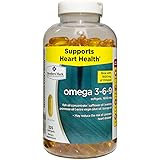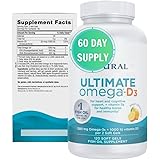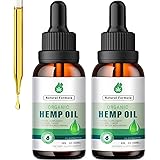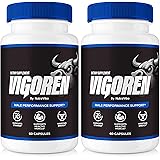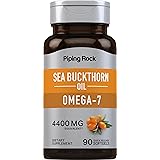The world of health and wellness frequently introduces us to new compounds promising significant benefits. Among these, Cannabidiol, commonly known as CBD, has rapidly emerged from relative obscurity to a ubiquitous presence in the health industry. As Dr. Mike Hansen explains in the accompanying video, CBD’s popularity has soared, sparking both curiosity and widespread adoption. Many individuals seek to understand exactly what CBD is, how it works, and whether it lives up to the hype, particularly given its distinction from its psychoactive counterpart, THC. This article expands upon the insights shared in the video, delving deeper into the science, history, and current landscape of CBD to provide a comprehensive understanding for those new to this fascinating compound.
Demystifying CBD: What is Cannabidiol?
At its core, **CBD** is a powerful phytocannabinoid found in the cannabis plant. Unlike tetrahydrocannabinol (THC), which is the primary psychoactive component of cannabis, CBD does not induce a “high.” This fundamental distinction is crucial for understanding its broad appeal and therapeutic potential. The cannabis plant genus is uniquely equipped with over 80 identified phytocannabinoids, but CBD and THC are the most prevalent, each interacting with the human body in distinct ways.
Historically, cannabis has been cultivated for diverse purposes. Marijuana, a subspecies of cannabis, is rich in THC and has been cultivated primarily for its psychoactive effects. Conversely, hemp, another subspecies, contains very low levels of THC and has traditionally been utilized for its robust fibers in industrial applications. The legalization of hemp in December 2018 marked a pivotal moment, as it opened the floodgates for widespread CBD production and commercialization. This legal shift, coupled with an increasing body of scientific evidence supporting CBD’s therapeutic attributes, has fueled the projected $22 billion market growth for CBD by 2022, signaling a transformative impact on health and wellness comparable to the tech revolution.
The Endocannabinoid System: How CBD Interacts with Your Body
For millennia, various societies across the globe, from ancient China to medieval Europe, employed cannabis for medicinal, recreational, and spiritual reasons. Historical records, dating back almost 5,000 years in China, indicate its use for a range of ailments. The ancient Greeks applied it to wounds, Vikings used it for pain relief, and even Queen Elizabeth reportedly relied on it for menstrual cramps. However, the precise mechanisms behind cannabis’s effects remained largely unknown until relatively recently.
A groundbreaking discovery in the 1960s by Israeli chemist Raphael Mechoulam began to unravel this mystery. He successfully elucidated the structures of both THC and **cannabidiol**. His subsequent, even more profound discovery in 1992 was the identification of the endocannabinoid system (ECS) within the human body. The ECS represents the body’s most extensive system of receptors, pervading the brain, nervous system, and various organs. It acts as a critical molecular bridge between the body and mind, playing an indispensable role in maintaining both mood regulation and overall physiological balance, known as homeostasis, especially in the face of external stressors and inflammation.
Mechoulam’s research revealed naturally occurring neurotransmitters, termed endocannabinoids, which bear a striking structural resemblance to the phytocannabinoids found in cannabis. When we consume cannabis products, these plant-derived compounds interact with our own ECS. THC, for instance, directly mimics our endocannabinoids and binds to the CB1 and CB2 receptors in the body. CBD, conversely, operates differently; it does not directly bind to these receptors. Instead, **CBD** functions as a reuptake and breakdown inhibitor, effectively preventing the degradation of your body’s natural endocannabinoids. This mechanism is similar to how selective serotonin reuptake inhibitors (SSRIs) work in the brain to manage anxiety and depression, by preserving serotonin levels.
The Broad Spectrum of CBD Benefits
The understanding of CBD’s interaction with the ECS has illuminated a wide array of potential health benefits. The video highlighted many of these applications, and a deeper dive reveals just how impactful **cannabidiol** can be across various aspects of well-being:
- Mood Regulation and Anxiety Reduction: By influencing the reuptake of endocannabinoids, CBD can help stabilize mood. It is particularly noted for its ability to increase levels of anandamide, often called the “bliss molecule,” derived from the Sanskrit word for extreme happiness. This mechanism contributes significantly to its reputation for reducing anxiety and promoting a sense of calm.
- Pain Management and Anti-Inflammatory Effects: Applied topically or consumed orally, CBD has demonstrated efficacy in reducing inflammation and alleviating overall body pain. Its anti-inflammatory properties are particularly appealing in sports medicine, where athletes such as professional golfer Bubba Watson and numerous MMA fighters advocate for its use to aid recovery and mitigate the risk of opioid dependence.
- Improved Sleep Quality: For individuals struggling with insomnia, CBD can promote more restful sleep. Its calming effects contribute to relaxation, which is a prerequisite for falling asleep and maintaining sleep throughout the night.
- Neuroprotection and Brain Health: Emerging research suggests that CBD acts as a neuroprotectant, shielding brain cells from damage. Furthermore, it appears to enhance neuroplasticity, the brain’s ability to reorganize itself by forming new neural connections, which is vital for learning and memory. Imagine if a compound could not only protect your brain but also help it adapt and grow more effectively.
- Potential in Cancer Treatment: While still in preliminary stages, some studies suggest that CBD might possess anti-cancer properties. More definitively, it has earned a place in supportive cancer care by significantly reducing chemotherapy-induced nausea and helping manage chronic pain associated with the disease.
An encouraging aspect of **CBD’s** profile is its generally favorable safety record. The World Health Organization (WHO) has stated that pure CBD exhibits “no effects indicative of any abuse or dependence potential,” and to date, there is “no evidence of public health-related problems associated with the use of pure CBD.” This suggests a promising therapeutic agent with a low risk of adverse effects, contrasting sharply with many traditional pharmaceuticals.
Navigating the CBD Market: What Consumers Need to Know
Despite the growing body of research and the positive reception, the CBD market is still in its nascent stages and presents certain challenges for consumers. The video aptly points out that “many products are being released without much regulatory oversight, and the CBD levels and overall quality of CBD products are not always as advertised.” This critical issue means that consumers must exercise diligence.
One of the primary concerns is the potential for mislabeled products. Some CBD items might contain unwanted levels of THC, which could lead to unexpected psychoactive effects or even a positive drug test for marijuana. Furthermore, the actual **cannabidiol** content can vary significantly from what is claimed on the label, leading to ineffective or inconsistent experiences. Therefore, thorough research into brands and their transparency is paramount. Consumers should prioritize companies that provide third-party lab testing results, which verify the product’s purity, potency, and the absence of harmful contaminants or undisclosed THC.
Beyond quality, questions regarding the optimal form and dosage of **CBD** remain. CBD products are available in numerous forms, including:
- Tinctures: Liquid extracts typically taken sublingually (under the tongue) for rapid absorption.
- Capsules/Edibles: Ingestible forms like gummies or softgels, offering precise dosing and a longer-lasting effect, albeit with a slower onset.
- Topicals: Creams, balms, and salves applied directly to the skin for localized pain relief and anti-inflammatory benefits.
- Vapes: Inhalation methods providing the fastest onset of effects, though concerns about lung health exist.
The ideal dosage is highly individual, influenced by factors such as body weight, the specific condition being addressed, and personal metabolism. It is often recommended to “start low and go slow,” gradually increasing the dosage until the desired effects are achieved. Consulting with a healthcare professional knowledgeable about CBD can provide personalized guidance and ensure safe integration with any existing medications or health conditions.
In conclusion, the journey of **CBD** from an ancient remedy to a modern wellness staple is a testament to scientific discovery and evolving perspectives on natural medicine. While the potential benefits are vast and exciting, consumer awareness and informed choices are essential to harness the true power of cannabidiol safely and effectively.



